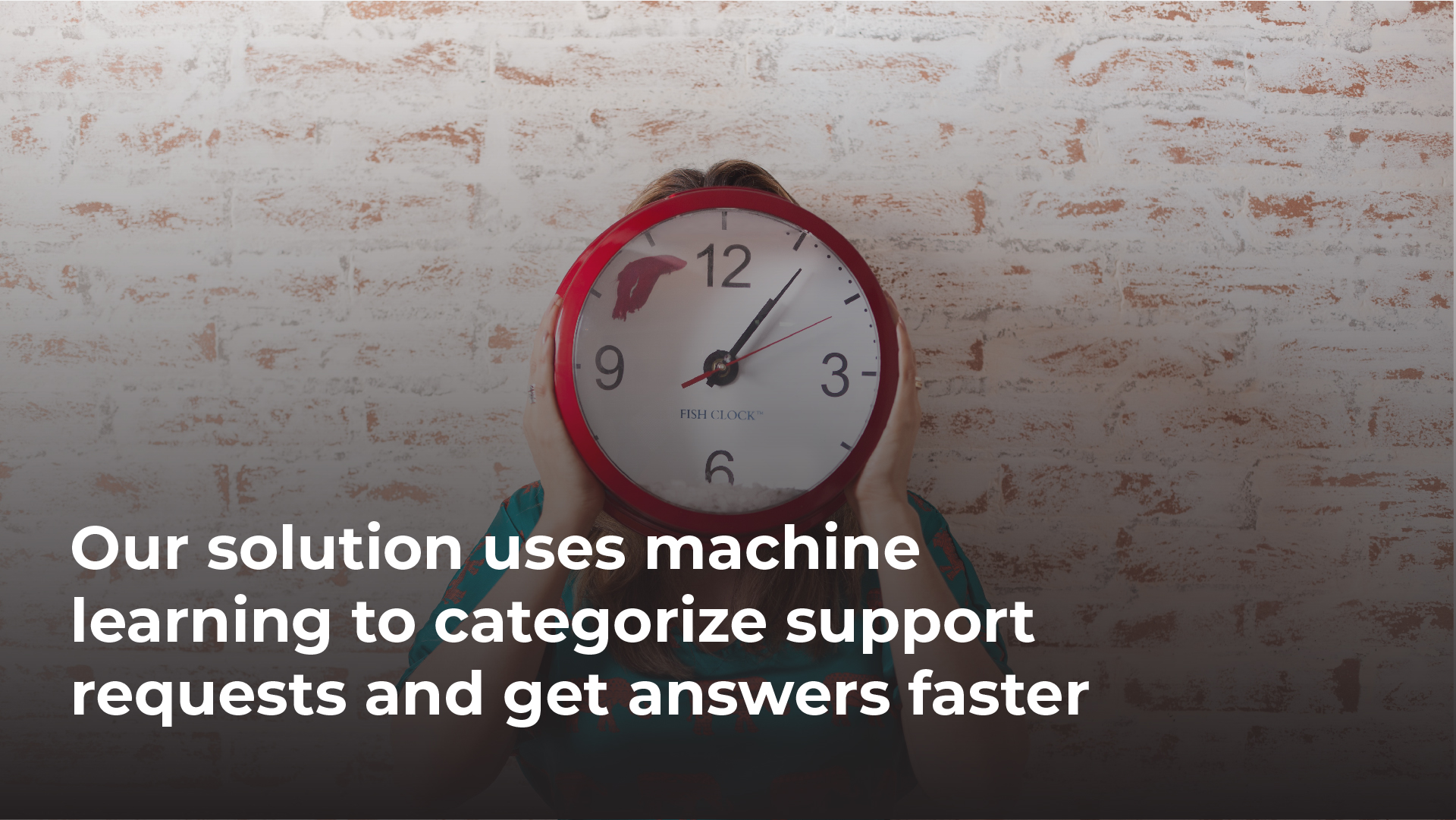
Key Challenges
• Create a machine learning (ML) model that recommends results from previously resolved customer support requests.
• Suggest responses with high confidence rating to open support requests.
• Enable new support staff to quickly find answers to frequently asked questions.
Anticipating Customer Support Needs
Our client, a large software company, needed a revamped support system for their distribution channel partner portal. 60,000 partners used the portal every day. Before we engaged with our client, the portal support team struggled to respond to support requests. Typically, the ten person customer support team faced 100 new support requests every day. Many similar questions were repeated. To better address repeat questions, the support staff created a knowledge base of resolved requests. Originally, the knowledge base consisted of a large text file containing questions and answers. Using the knowledge base, the support staff searched for answers to active support requests. Due to the high volume of questions, searching the knowledge base resulted in slow response times after significant effort.
Our Approach
Our client wanted a machine learning solution to reduce the time needed to train support staff and answer support questions. We trained the machine learning model by asking support staff the following question: “To which category does this support request belong?” We used the feedback to categorize the hundreds of support requests and build a knowledge base. We also manually tagged the resolved issues in the support database.
As in most AI implementations, initial results from the machine learning implementation were not optimal. Only 30% of results were relevant to the support questions. After some investigation, we concluded the data needed additional cleansing. After cleaning the data, the success rate rose above 80%.
Better Results for the Staff and Customers
The improved machine learning model yielded immediate results. The client’s active support request count now hovers around zero. But the project leader warned against celebrating purely based on the active support request count. The team emphasized that an improved user experience is a better measure of success than metrics. “Our goal is to answer the questions completely and accurately the first time. We evaluate our effectiveness by measuring how often resolved requests return to the support team."After the introduction of the machine learning approach, the support ticket bounce rate fell by 20%.
Our machine learning model also reduced the duration of new employee training. The machine learning model reduced the average time needed for a new employee to answer a support request by 10%.
To resolve support requests faster, the support team relies on the new knowledge base system. Our machine learning model reduced the active ticket count, the support ticket bounce rate, and new employee training effort. Now, 60,000 end users receive faster answers because we eliminated manual searches through large text files.
To resolve support requests faster, the support team relies on the new knowledge base system. Our machine learning model reduced the active ticket count, the support ticket bounce rate, and new employee training effort. Now, 60,000 end users receive faster answers because we eliminated manual searches through large text files.
